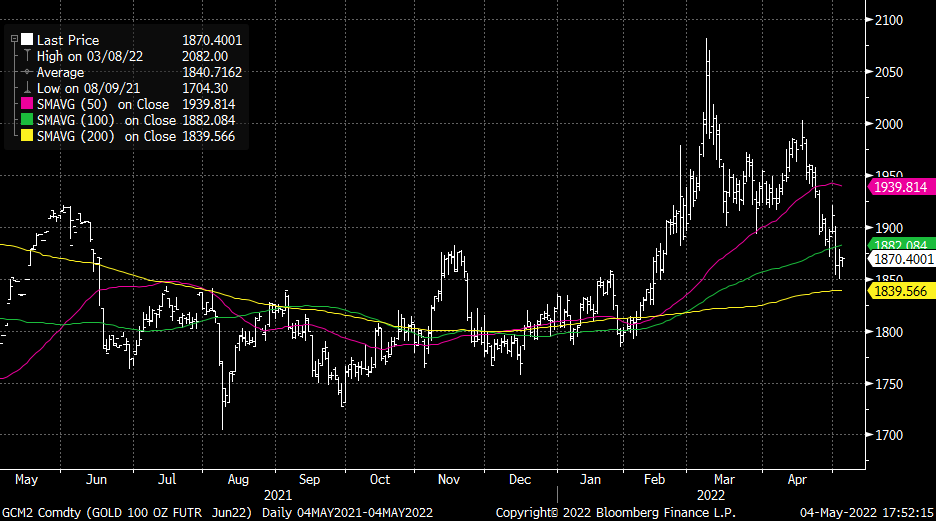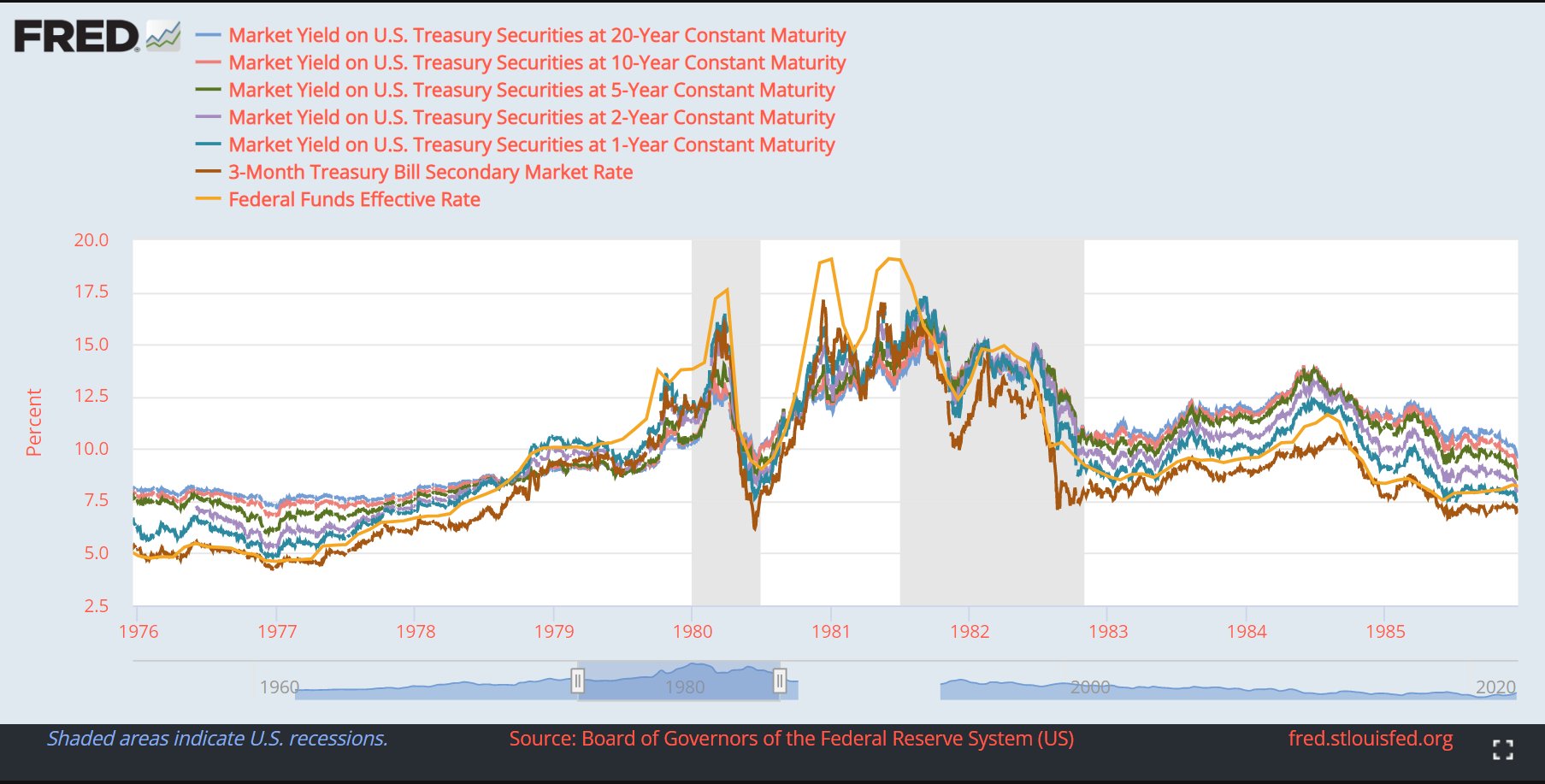"Hi, stagflation": How the professionals trade Federal Reserve rate hikes
The inspiration for the title of this wire is a Forbes article published earlier this week by Brian Domitrovic of The Laffer Center in Texas. In it, Brian declared "it's 1974 all over again" - despite resistance from some corners of the market saying they want to see a second GDP print for proof.
The response from the world's most powerful central bank was to increase its target interest rate (known as the Fed funds rate) by 50 basis points, to a new range of 0.75 and 1%.
The move is relatively unprecedented. In fact, it's the largest move in 22 years.
The bulls get a win
Speaking after the decision to the press, Chairman Jerome Powell called inflation's impact "unpleasant", adding "everyone is better off with stable prices". On quantitative tightening, the bank will wind down its balance sheet progressively before reaching a peak at US$95 billion starting in September.
But, the biggest surprise of all was one for the equity market bulls. Chair Powell said the committee is not actively considering the need for 75 basis point hikes. Combined with a less hawkish than expected wind-down of the balance sheet, US equities soared while the volatility index and the US Dollar index sank like a stone.
Incidentally, the last time markets soared this much following a Federal Reserve rate hike was in 2000. Those with long memories will know what happened next.
So with more on the way as the US (still) deals with inflation nearly triple its own central bank's targets, how should you play this historic move? We asked two leading experts to give us their analysis of the situation.
How Gennadiy Goldberg of TD Securities is playing the Fed
Gennadiy should know what he's talking about when it comes to US economics. He, along with his senior Priya Misra, are two of the most respected fixed-income traders on Wall Street. As a team, they've nailed big contrarian calls (usually with a dovish slant) in the rates market. And while some traders were hoping the Federal Reserve would just shoot the lights out, Gennadiy and his team correctly predicted the board’s moves today.
"We think this is absolutely the correct decision as inflation remains much too high and the Fed attempts to expeditiously move rates back to neutral," Gennadiy says.
On that all-important neutral rate that strategists and economists live and die by, Gennadiy thinks the endgame is for a 2.75% handle. This would come in slightly above the Fed's own projections (remember, they are a bank after all - they have their own team of economists) but Gennadiy thinks something else is far more important – the pace.
"Most of the committee wants to achieve a soft landing, which we think could be achievable if the committee tightens very cautiously once they reach neutral. However, the risk is that the Fed inevitably overtightens, which would make for a bumpier landing," Gennadiy says.
Gennadiy's trade
In Gennadiy's own words - "we are leaning long the front-end of the curve since we think the market has already priced in a more than a substantial amount of Fed tightening. The dollar has certainly strengthened on the Fed's hawkishness and the expectation that they would lead the rise in interest rates relative to their G10 counterparts."
How Australia's Jonathan Pain of The Pain Report reacted
One local investor who has had his eye on the world's most powerful central bank since the early 1980s is Jonathan Pain of The Pain Report. Jonathan sits on numerous investment committees and worked at Rothschild and the former BNP Paribas Asset Management. For the last 13 years, he's also written one of Bridge Street's most influential reads – The Pain Report. If you love charts as much as I do, I highly recommend you read it.
Jonathan has also long been bearish on the Federal Reserve's ability to engineer a soft landing – he thinks mistakes have and will continue to be made in what he has previously written as "the greatest forecasting error" in his time as a professional investor. So to answer how far he thinks they will hike, he has a pretty blunt answer:
"Until something breaks and it will."
"If we see rates near where the market is currently anticipating the equity market will be much lower," Jonathan adds.
"Something will have broken, in my view, before we get to 3%. Furthermore, I think we are now seeing a world of stagflation. It's already happening in Europe and I think America gets there by year-end."
Jonathan's trade
Jonathan has an interesting spin on the “safe haven” trade we know and love.

He doesn’t have a large position in physical gold (though he does trade opportunistically). Rather, he makes his money through a long position in the gold miners through the VanEck Gold Miners ETF (ASX: GDX).

In a recent email to me, Jonathan described gold as an asset that is “bewildering and confusing”.
His other main interest at the moment is the currency markets - where he is closely watching the Chinese Yuan, and of course, the ongoing strength of the US Dollar against just about everything.
Chart of the week

One thing worth keeping an eye on is market pricing - which in turn reflects traders' bets (and opinions) on the Federal Reserve's policy path. After printing some US$9 trillion over the last two years alone, some traders argue the only recession indicator which has not caught up is the data itself (bar a GDP print which showed an unexpected contraction in Q1).
Yet despite all that money, they will only wind it back at a maximum rate of $95 billion per month, far less than what some strategists were predicting.
So how will the Federal Reserve handle predictions of a second, larger recession in the US? And will accelerated rate hikes punish the consumer harder than even the most hawkish investors expect? Either way, there is probably no going back.
Never miss an insight
If you're not an existing Livewire subscriber you can sign up to get free access to investment ideas and strategies from Australia's leading investors.
I'll be in charge of asking the questions to Australia's best macro strategists, economists, and fixed income fund managers. If you have questions of your own or guests we should chat to, flick us an email: content@livewiremarkets.com
4 topics
1 stock mentioned
1 fund mentioned

